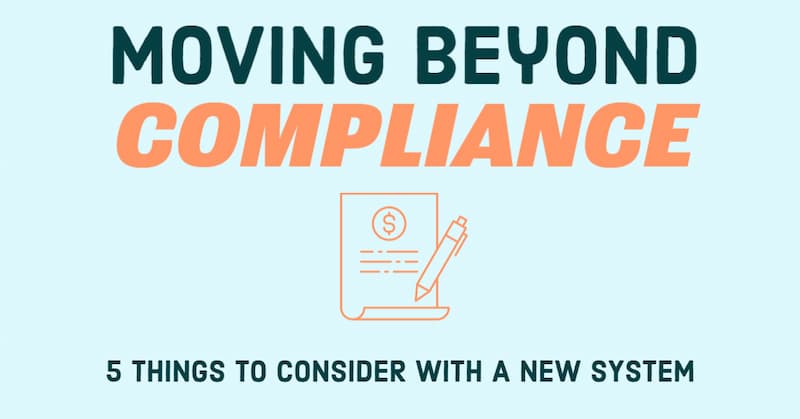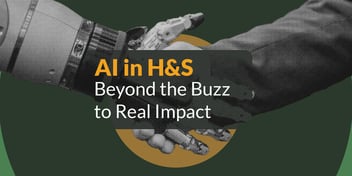Dreaming and scheming of integrated systems is a noble pursuit
Systems are important - but it’s easy to fall into the trap of box-ticking compliance, and forget the value of organisational-wide engagement from all your people.
While in theory developing any organisational system is a good idea, it’s easy to fall into the trap of only focusing on compliance, or using outdated software that doesn’t work properly. ISO standards are an excellent example: we want to achieve certification to improve our business and create a cutting-edge competitive advantage that appeals to customers. However, it’s easy to miss the mark.
Get fresh H&S insights weekly
Picture this:
An organisation has been asked by its customers or parent company to become certified to a standard (think ISO 14001, 45001 etc.). Dutifully, the Health and Safety Manager develops a rudimentary system consisting of a range of documented procedures to meet the requirements of this standard. Alongside this, they maintain a number of spreadsheets on their computer to record the appropriate metrics and document legal requirements. An auditor from an accredited body visits the organisation and confirms that the party meets all the requirements of the standard. Sure enough - just like that - the company achieves third-party certification.
The organisation celebrates its achievement of reaching the elusive pinnacle of health and safety or environmental management. Another year passes, and the auditor returns - once again, the company successfully achieves certification (perhaps with a few corrective actions).
Happily, the organisation celebrates once again. The marketing team goes to town and pushes the theme of the company’s commitment to health and safety across all their content, while the sales team smugly inform their customers that the organisation has achieved certification. Everyone pats themselves on the back - except the Health and Safety Manager. Deep down, she knows that in reality, few staff members actually read and embodied the principles behind their shiny new system. In those two years, all that happened was the dusty folder on the shelf simply collected more dust - and critical health and safety principles are a long way from being integrated into the business.
Does this scenario sound familiar? You may have a system like this in your own company. Certainly, if you’re a management systems consultant or auditor, you’ll most likely have developed or audited ‘systems’ like this for your clients. The implementation of management systems using this outdated approach is very common in New Zealand and Australia, and indeed, around the world. It’s not unusual for the folder-on-the-shelf system to continue to reinforce a lack of awareness and commitment to larger issues from managers and employees.
Unsurprisingly, these situations don’t actually make workplaces safer or reduce the impact on the environment - which is really why those ISO standards exist in the first place.
5 Things To Consider:
While implementing intelligent environmental, health and safety, risk management or any type of system can be difficult, there are five key considerations that you should take into account to help shift your systems from box-ticking to highly effective:
1. Stop and think before you add another rule. Do you need more? It’s no secret that arbitrary rules are the bane of everyone’s existence within a workplace. Asking your team for two-way communication about rules set in place and having regular discussions where you discover where they feel most unsafe in their job are two useful ways you can combat bureaucracy and engage your team.
2. Streamline your focus. Instead of over-compiling lists of every potential risk, shift your focus onto the most critical ones - and then determine actualised controls that can prevent them from occurring.
3. Empower your people to take leadership around their own safety. Transform your workers from the passive bystander, listening, half-focused during the safety briefing to the person most involved in their own H&S process because of their proximity to a high-risk situation.
4. People first, forms second. In any health and safety system, make sure your investigations focus on conversations with your people first, and then the form-filling second. The forms are there to record the incident, but they’re usually black and white - and leave little room for the grey areas that can lead to near-misses or accidents.
5. Ask yourself, why do you need a system?
Keep the why at the centre of your systems. Don’t implement anything just to gain certification and tick a box. For example, if you’re implementing an EMS, keep your focus on reducing your organisation’s environmental impact - rather than just how you might meet the standard’s requirements. If you’re looking at improving your safety system, keeping your people safe should be the number one priority. Certainly, certifications can be achieved fairly easily - but will achieving the next standard actually give your organisation the benefit of real-life risk reduction?
.jpg?width=800&height=419&name=Compliance%202%20(2).jpg)
Final Words:
These five elements to consider will help you mitigate the issue of a potential increase in bureaucracy as you implement more systems so that you remain efficient and effective. At the end of the day, if you build a system that only aims to tick the boxes of a certification standard, you won’t have the benefit of reducing health and safety risks.
A proactive approach to your systems - health & safety, environmental and risk management - not only helps you achieve the ISO standards and remain compliant and competitive but also improves your business function overall. With this approach, growth and success are inevitable.




.png?width=352&name=Blog%20hero%20image%202406%20(4).png)
.png?width=352&name=Verdantix%20GQ%20Blog%20(4).png)
tal%20health.png?width=352&name=Lets%20talk%20(men)tal%20health.png)


